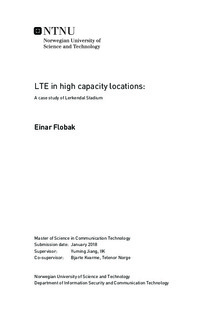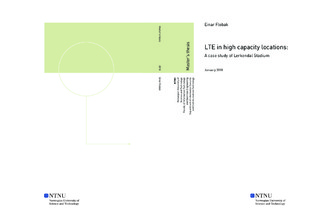| dc.description.abstract | As the demand for mobile data is expected to keep on growing, the mobile network needs constant development. So, how should Telenor Norway build and invest in the mobile network in order to handle high capacity events in the future? As the frequency spectrum available for mobile data traffic is limited, we need to find the most efficient way of using it.
By using new frequency efficient technologies and innovative solutions for the radio interface, the mobile network capacity can be increased. For high capacity locations as concert arenas, stadiums and such, the challenge is providing tightly gathered devices with sufficient capacity without causing interference.
The LTE network installation at Lerkendal Stadium, Norway, is the starting point for this thesis. By comparing this to other high capacity locations with a LTE installation by Telenor Norway, this thesis identifies success factors in the LTE installations.
Furthermore, by considering historic data and forecasts for future traffic growth provided by Telenor Norway, this thesis aims to provide feedback on how to build the LTE installations of tomorrow. | |

